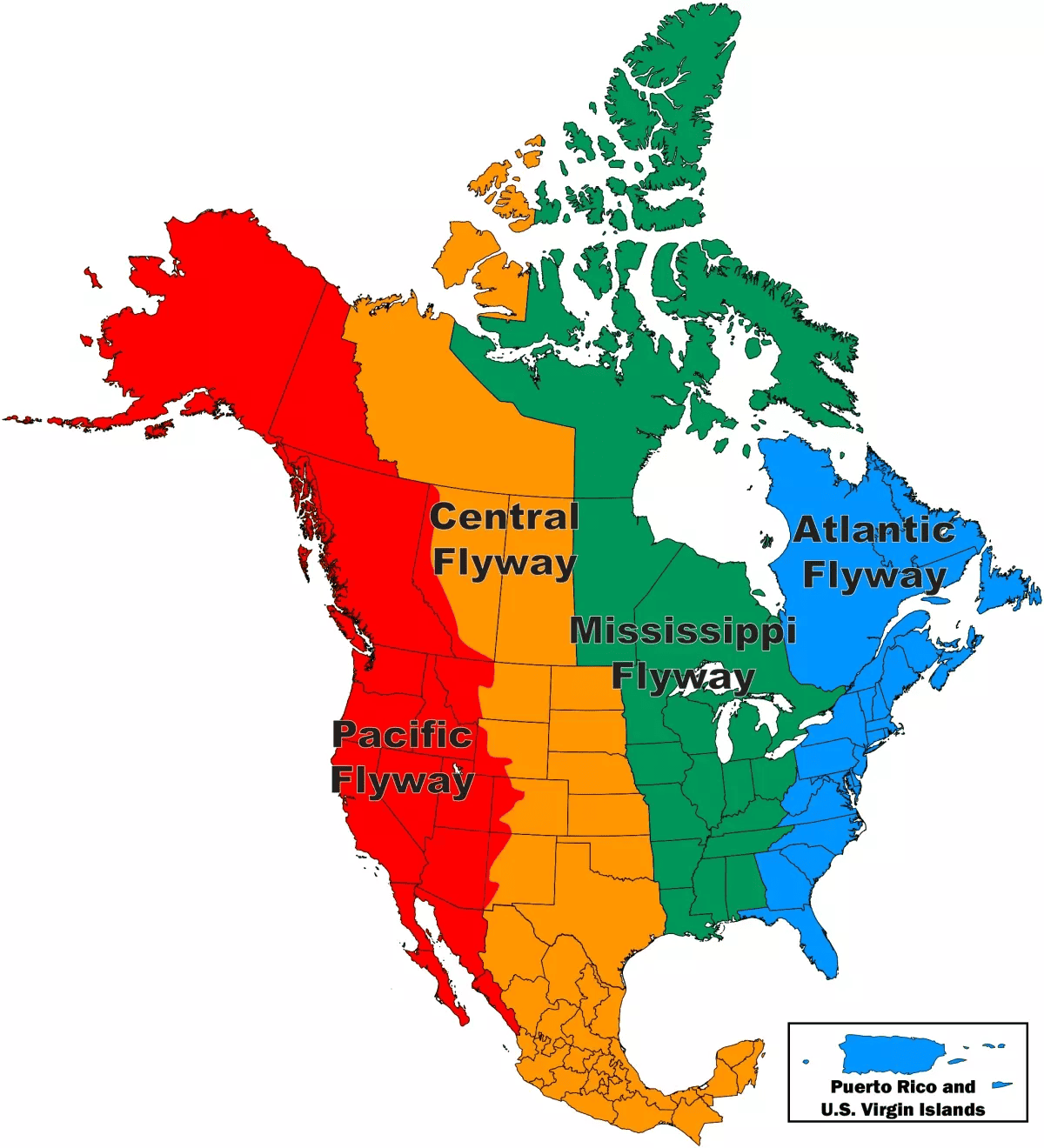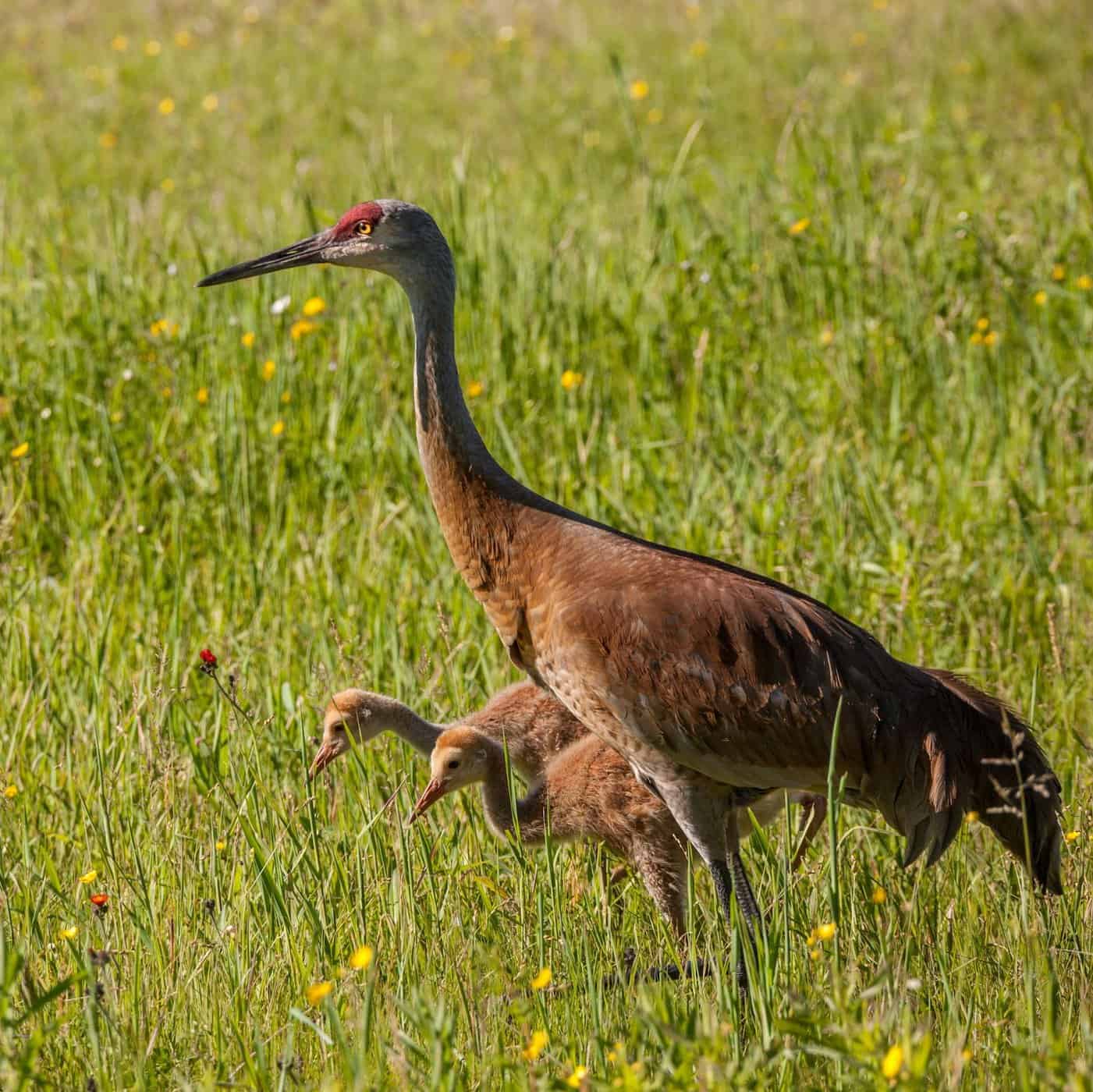As the snow begins to melt, the temperatures gradually warm, and the buds start to blossom on the trees, it’s a sure sign that migratory birds will soon make their appearance in the St. Croix Riverway. The St. Croix, along with many tributaries of the Mississippi River, form one of four super migration highways in North America, known as flyways.
The Mississippi Flyway serves as a critical route for the migration of over 325 bird species, which travel from their wintering grounds in Central and South America and the Gulf of Mexico, to breed in the northern United States and Canada during the summer months. Notably, about 40% of shorebirds and waterfowl in North America rely on this flyway for their migration. The Mississippi River provides excellent habitat for these migrating birds, which account for almost half of all bird species in North America, to catch their breath on their long flight, grab a snack, and rest their wings in protected habitats.
Bird enthusiasts are constantly on the lookout for migratory birds. While you could take to a field or a forest to spot these avian travelers, there are many species that can be spotted on your daily commute. As migratory birds return from their warm winter homes, there are opportunities to observe some fascinating species that prefer the high perch and protection of powerlines. Although mourning doves are a common sight on these lines, the American Kestrel is an exciting bird to spot. As North America's smallest falcon, male kestrels have striking blue/gray wings, while their female counterparts are brown, exhibiting sexual dimorphism - or differences in appearance between males and females of the same species. Powerlines serve as the ideal perching spot for these swift little birds as they patiently wait for their preferred prey: dragonflies.
Sunset drives that take you by open fields present a prime viewing opportunity to spot sandhill cranes. At 4 feet tall and resembling their dinosaur ancestors, these birds are easy to spot in height while their muddy brown color provides a bit of camouflage while they scavenge spring fields that haven’t quite started to green. They’re actively looking for grains left behind in fields, small animals, and insects to support their long flight back up north. If you have your windows down, you may be able to catch their call, a loud, rattling kar-r-r-r-o-o-o.

While sandhill cranes may be spotted on the ground, overhead, turkey vultures may be found circling in the warm air, keeping a nose out for their next meal. While other vultures have a terrible sense of smell, turkey vultures are able to find their food by nose alone. While soaring overhead, their silver-gray flight feathers are easy to spot next to their dark brown body feathers and naked red head. Sometimes, you can spot them on the side of the road alongside bald eagles or American crows feasting on roadkill.
Driving over the St. Croix River provides ample opportunities to spot large, white water birds. Trumpeter swans can be seen in pairs with their large, white feathers, long neck, and black bills. Recently, some of the large, white birds have actually been American white pelicans! Their long, orange beak is excellent for picking up fish out of the water and swallowing them whole and helps to easily distinguish them from swans. If you have the joy of seeing them fly, look for black wingtips and tucked-in feet and neck.

If you've had your windows open, you'll have noticed that songbirds are making a triumphant return! Male Baltimore orioles are especially striking with their vivid orange bellies and black heads. These remarkable birds have traveled all the way from northern South America and may even pay a visit to your birdfeeder if you offer them a delicious fruit mix. You may also notice a flurry of feathered activity under your feeders with visitors such as warblers, thrushes, and a variety of sparrows.
According to BirdCast, a real-time analysis map of migrating birds, more than 423 million birds are taking to the skies each day as of May 1st. This staggering number encompasses a diverse range of species, from tiny birds like the golden-crowned kinglet to large water waders like the great egret, to brightly colored warblers such as the small yellow prothonotary warbler.
With so many species on the move, it can be tricky to ID what you’re seeing. After your drive, check apps like Merlin and Audubon or a good old-fashioned reference like Sibley’s Bird Guide can help you name what you’ve spotted. Look for distinguishing features or note the location of your sighting. As an example, Eastern bluebirds are back with their vibrant blue on top and orange belly but may be confused with our winter friends, the blue jay, that have a white belly and a black “necklace”. Likewise, the belted kingfisher is about the same size as blue jay with a blue mohawk and white belly. Typically found near marshes and smaller bodies of water, they “fish” by diving headfirst into the water for their next meal.
Photo Credit: US Fish & Wildlife Service and Craig Blacklock
